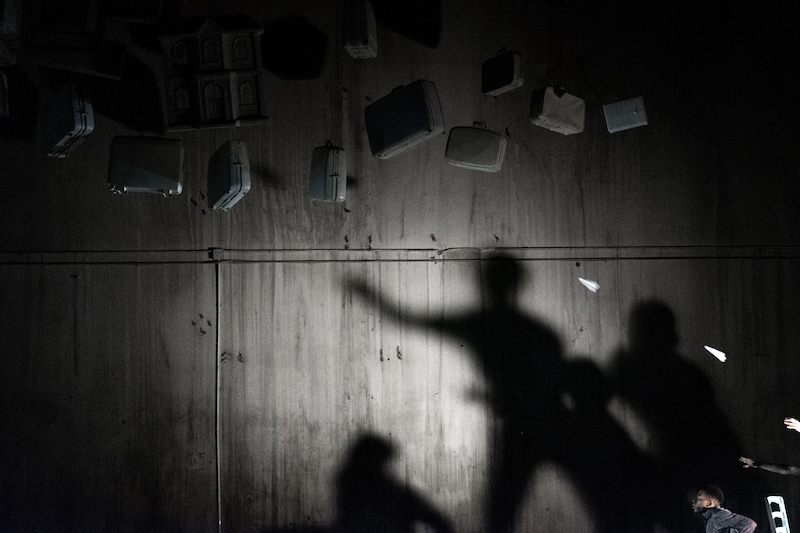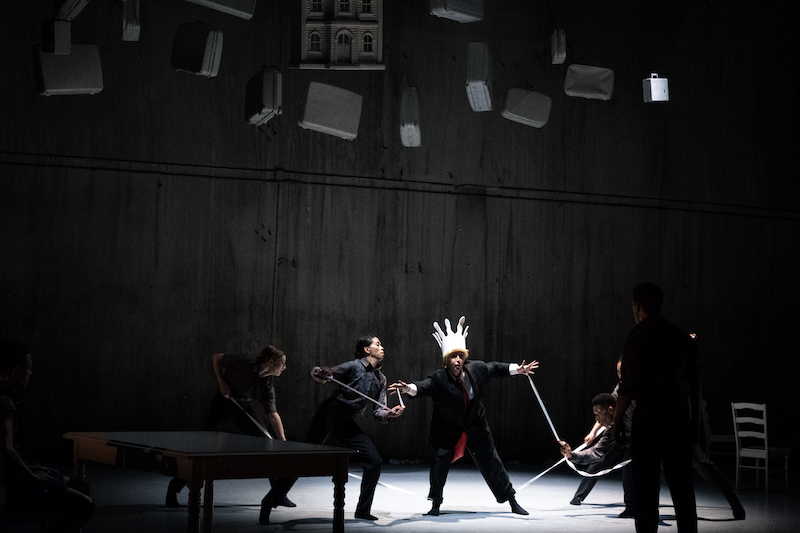Storytelling through Contemporary Dance
Review of This is Not the Little Prince by Whim W'Him.
Written by TeenTix Newsroom Writer Katherine Kang, and edited by Teen Editor Hannah Schoettmer!

The movement of the human body accompanied by a simple monotone score, props that seem familiar, and a new musical score can tell a beautiful story with great emotion and power.
After almost two years of brainstorming and eight intense weeks of choreographing and rehearsing, This is Not The Little Prince is now being performed at the Cornish Playhouse. This one hour contemporary dance piece is full of heart, creativity, emotion, and flexibility. Choreographed and staged by Olivier Wevers, this show conveys a well-known story in a new light, with the story of the author. Using the language of dance, everyone can interpret the narrative, no matter what language they speak.

With a strong steady beat and the music of the live accordion, paper airplanes take flight and the show begins. Each dancer moves their body in ways that are fluid and unbelievable. The immense amount of flexibility and intertwining of their bodies, depending on each other while they play with different levels—some dancers flew in the air, some rolled on the floor, is incredible.
The costumes and the music are two key elements of the show. For example, at the beginning of the show, there is a woman wearing deep wine-colored dress, juxtaposed with the simple white outfits on the rest of the dancers. Later in the show, the dancers are wearing a simple outfit and are blindfolded with red scarves that clearly contrast. The music is also a key element of the show. During the same scene where the woman is coming in and out, the beat becomes more powerful and there is a sound effect that correlates with her coming and leaving. During the whole show, the music varies and there are many sound effects on the sound track as well. Wevers worked with Brian Lawlor to create the wonderful medley of music to accompany the dancers’ movements. From typewriter clicks, to Morse code, to intense melodies, the music aided the show very well. This music also helped the flow the show by transitioning the scenes smoothly.
Wevers also integrated a political statement into his piece. Towards the end, a person dressed as Donald Trump entered the stage while being pulled by strings on his limbs, as if he were a puppet. The Trump character had a crown with over-dyed orange hair and a long red tie, both signature colors of Trump. As he was on the stage, a recording of President Trump saying, “billions of billions of billions of billions…” etc. was played. They then played audio of Trump speaking about people being controlled by puppets.

The variety of simple set pieces also added values to the production, highlighting the dancers without distraction. The use of the white table was very creative—it doubled as a door, a mirror, and a wall. It’s also used as a projection screen when the dancers used shadow puppetry to creatively show planes flying and people coming down to ground using parachutes.
After the show, the six dancers and choreographer came out to do a short Q&A and shared a few secrets or less known facts about the show. For example, the Morse code used in the show’s soundtrack that many may just overlook has a very interesting story behind it. In concentration camps during WWII, the prisoners would do cross-stitching, and would create a cross-stitched frame that had the date, their location and a message. The prisoners would hide a secret Morse code in it that could not be found by anyone who didn’t know about it. All the prisoners knew about the code. This Morse code said “F*** Hitler”. The guards would encourage the prisoners to create more of these messages because they believed that Hitler’s actions were not aligned with their personal beliefs, just like some of Trump’s administrative staff may not believe all his actions are good for the people. The guards encouraged the creation of more messages so that all the prisoners could have one in their housing as an act of rebellion. This is the same Morse code that was integrated into the show.
Lead photo credit: Whim W'Him in This is Not the Little Prince. Photo by Stefano Altamura.
The Teen Editorial Staff is made up of 5 teens who curate the review portion of the TeenTix blog and manage the TeenTix Newsroom. More information about the Teen Editorial Staff can be found HERE.
The TeenTix Press Corps promotes critical thinking, communication, and information literacy through criticism and journalism practice for teens. For more information about the Press Corps program see HERE.

